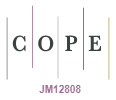Session 12. Oral Presentation for: Augmenting cased hole logging and pressure testing: improving subsurface well barrier risk assessment through machine learning
Tim Thomas A *A

Tim has been employed in the Australian petroleum industry for over a decade, working in a variety of roles in drilling and completions and well operation teams. Tim is currently responsible for well integrity for a field of approximately 980 active wells and the associated Well Integrity Management System. Along with this work, Tim is completing a PhD at the University of Queensland, researching the regulation of well integrity for unconventional oil and gas projects across several jurisdictions. Prior to this, Tim was a logistics officer in the Australian Army, serving both at home and abroad for 13 years. |
Abstract
Presented on 28 May 2025: Session 12
Assurance of casing and cement integrity is a key component in well integrity management. Traditional methods to assess casing and cement have largely required rigs or logging units to intervene on a well. Such methods are being enhanced by the introduction of new technologies, especially in downhole gauges. Many operators now can gather greater volumes of data than in the past, which has led to significant interest in adopting machine learning (ML)-based applications. This interest has resulted in ML being applied in many operators, especially in the areas of production surveillance, drilling optimisation and reservoir engineering. One area that hasn’t received as much interest is well integrity management systems. This paper assists in addressing this research gap by examining key reasons why usage in well integrity management has been less than other areas, reviewing analyses from previous researchers and discussing what assurance activities are suited for use in ML. Additionally, this paper summarises the results of a collaborative research project conducted with a coal seam gas (CSG) operator to assess the feasibility of implementing an artificial neural network-based application to support its Well Integrity Management System. This research demonstrated that such an application could be implemented in a CSG environment and could improve outcomes by augmenting the current system, especially in risk assessment and well selections of interventions.
To access the Oral Presentation click the link on the right. To read the full paper click here
Keywords: artificial neural networks, barrier assurance, barrier failure, casing integrity, cement integrity, coal seam gas, data management, integrity management, machine learning, Queensland, risk assessment, well integrity, well surveillance.
 Tim has been employed in the Australian petroleum industry for over a decade, working in a variety of roles in drilling and completions and well operation teams. Tim is currently responsible for well integrity for a field of approximately 980 active wells and the associated Well Integrity Management System. Along with this work, Tim is completing a PhD at the University of Queensland, researching the regulation of well integrity for unconventional oil and gas projects across several jurisdictions. Prior to this, Tim was a logistics officer in the Australian Army, serving both at home and abroad for 13 years. |


